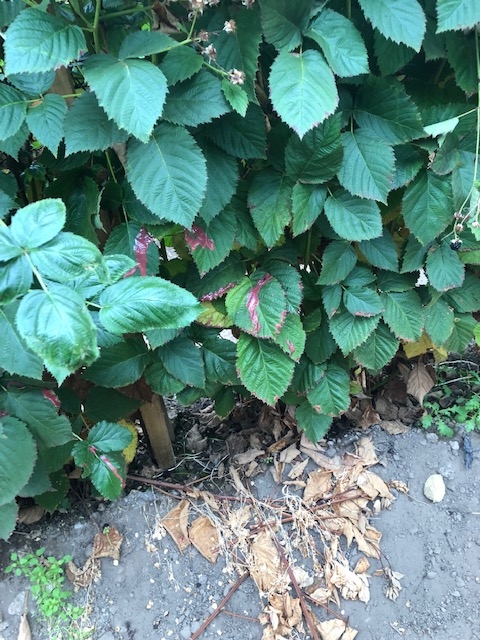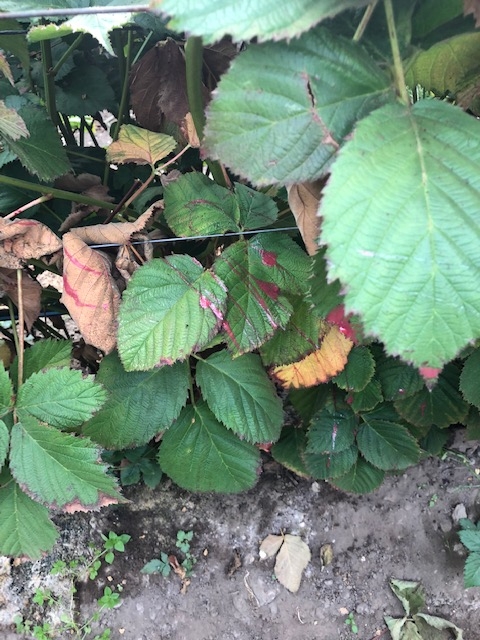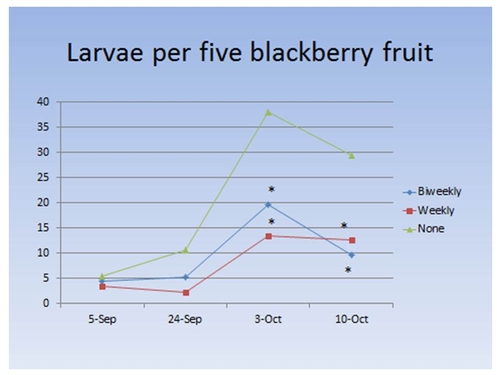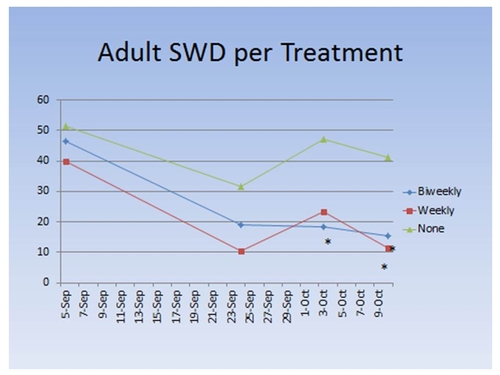ISCA Hook Bait and Kill for Management of SWD in Blackberry
Some questions have been coming up concerning "what's new" in SWD management in berries, so I thought I would share this work that I've presented at some of the meetings during the winter cycle.
This study concerns the use of a bait and kill approach with a bait designed specifically for SWD, that is to say Drosophila suzukii, rather than using baits like GF120 which is designed for true fruit flies (NOT vinegar flies) and subsequently have activity on SWD that is so so. The method is attractive in theory, since it avoids contact with beneficials like honeybees and predators, at the same time that it delivers the active ingredient (in this case spinosyn) straight into the gut of the target.
The work was funded by the USDA IR4 program, which facilitates pesticide registrations in minor crops.
The trial consisted of 3 treatments, those being an untreated check, one treatment of ISCA HOOK applied once a week and another of ISCA HOOK applied every other week, and was executed as follows:
- Weekly applications of ISCA HOOK bait and kill made on September 6, 13, 20 and 26.
- Biweekly applications of ISCA HOOK made September 6 and September 20.
- Both application schedules at the rate of 1.5 L material per acre.
- Large replicate plots at 15,750 ft2 each.
- Material distributed with a whisk broom at the base of the hedgerow.
- Two commercial insecticide applications made during the duration of the study, once 9/8/2018 and then again on 9/22/2018.
Going to slides 3 and 4 toward the bottom we can see that numbers of larvae found per fruit were significantly lower than the untreated check in both biweekly and weekly application treatments a little bit less than a month after initiation, and numbers of adults were significantly lower in the biweekly application treatments a little bit less than a month after initiation, and then significantly lower in both treatments five weeks after initiation of the trial.
Bottom line is that this bait does work in reducing numbers of SWD in blackberry, look forward to seeing it registered and available to growers.
As always, there is a pesticide reviewed in this post, and growers should always refer to pesticide labels before making an application and refer questions to the local Agricultural Commissioner or Cooperative Extension office.

Freshly applied ISCA HOOK. Mark Bolda, UCCE.

Condition of ISCA HOOK Oct 10, several weeks after last application. Mark Bolda, UCCE.

Number of SWD larvae per 5 blackberry fruit.

Number of SWD adults per 18' of row (one side).

